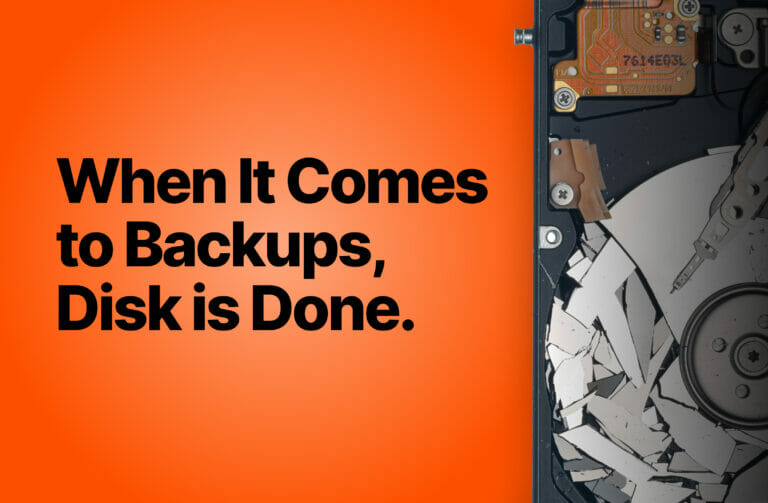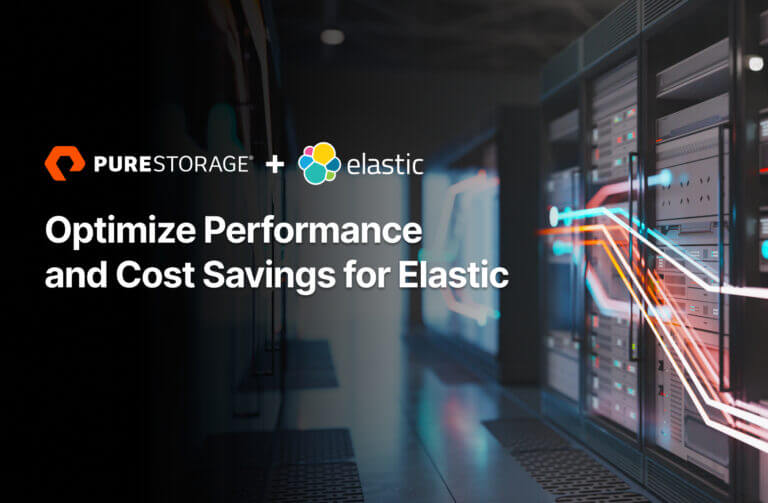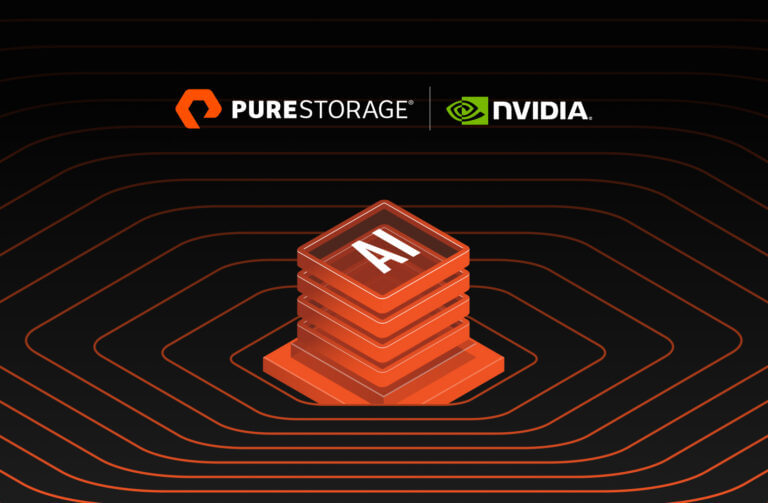Happy New Year! Hope you are recharged from the holidays and ready for an amazing year. We at Pure Storage certainly are. And, we’re excited to extend our partnership with VMware and make our joint solutions even more awesome. One of the first things out of the gate is our support for VMware Virtual Volumes (VVols) where we enable VMware admins to gain per-VM control effortlessly. Learn how we are addressing virtualization challenges.
Those of you who attended VMworld last year probably heard all the buzz around Virtual Volumes, or even attended the VVols session with VMware’s Pete Flecha and our very own Cody Hosterman. There have been already a lot of articles written that discuss the merits of VVols, and why you should look to adopt VVols, especially if you are running mission critical applications on VMware. In case you are not caught up… here’s our perspective:
The following illustrates the current challenges we’re hearing from VMware admins face as virtualization scales:

To summarize, as virtualization environment grows, the challenges become more exposed with the traditional Virtual Machine File System (or VMFS) implementation:
- Datastore Granular Data Services: The lack of direct mapping to storage services to individual VMs creates inefficiencies and complexity. All VMs on a datastore essentially get assigned the same data services when you may not necessarily need it for all.
- Noisy VM Neighbor: Lack of ability to address noisy VM neighbor can impact performance of other VMs.
- No VM-to-Storage Visibility: No insight to storage makes it difficult to troubleshoot especially performance and forecast growth.
- Compliance Drift: Lack of visibility or alerts to data services on VMs will impact SLAs.
- Discrete VM and Storage Management: Lack of integrated management of VMs and storage adds more complexity with too many points of control.
- No Protection From Accidental VM Deletion: No easy method to restore deleted VMs without 3rd party tools.
- Rescan Operations: Any changes to your virtualization environment (e.g. creating, adding, deleting VMFS datastore) trigger rescan operations and updates to storage which ultimately impacts productivity.
- Proprietary VMFS Format: No flexibility for data portability to bare metal or cloud when your business demands it.
The crux of these challenges results from the lack of direct VM-to-storage mapping preventing granular data services at the per-VM level where Tier 1 mission critical apps can really benefit! So what if that obstacle was removed? That’s what VVols aims to accomplish.

Pure Storage now officially supports VVols in the latest release of Purity 5.0 Operating Environment. Much like the design of the Pure FlashArray, the implementation design of VVols is focused on making it super simple, enabling customers to take advantage of VVoLs effortlessly.
Take a look at this video series that talks about what VVols is, what it solves, and the value it delivers with Pure Storage.
Here’s a quick summary of the key values of the simplest VVols implementation with Pure Storage:

Assure per-VM SLAs
VVols with Pure, accelerated by all-flash including 100% NVMe on FlashArray//X, enables granular per-VM data services where it can take advantage of Pure’s highly efficient data services, including snapshots and replication. VM admins are now empowered to automatically assign storage policies with compliance checks to assure delivery of SLAs. Storage Policy Based Management automatically identifies if drift occurs in configured storage policy. With Pure1®, Pure’s cloud-based monitoring, analytics, and support platform, it provides insight into the storage so admins can monitor their whole environment down to the per-VM level to help with reporting and rapid performance troubleshooting.
Simplify per-VM Management
Storage policies can now be easily assigned per-VM. Through the integration with the vStorage APIs for Storage Awareness (VASA) Provider, Pure data services are exposed to vCenter to help VM admins establish the right policies for each of their VMs.
With Pure’s design, any deleted volumes (VMs in this case) are automatically kept for 24 hours. If a VM is deleted accidentally, you can undo the VM deletion and rapidly recover your VMs without the need for 3rd party tools or scripts which can be complex and takes time.
You also benefit from our Pure1 Meta which uses machine learning predictive analytics from call-home telemetry of Pure customers to not only help resolve potential issues of the array, but assist in better per-VM performance and capacity planning to optimize resources.
Gain per-VM Data Portability
With VVols on Pure, you gain the flexibility to go from virtual to physical (bare metal), physical to virtual, and on-prem to cloud with native data format. How? Pure has uniquely designed it’s VVols implementation to allow this flexibility. Now you can take a VM and boot it up as a native Linux or Windows machine or vice-versa. When combined with Pure’s CloudSnap, a feature coming in the near future, you will have the ability to take snapshots and send it natively to the cloud, Amazon S3 for instance, which you can then use for archival or dev/test. Check out this demo to see how easy it is to take a VVols on FlashArray and presenting it to a physical server:
Some of you may have had the impression that VVols is complex, but that was due to some of the initial storage implementations when VVols was first introduced. We’ve made sure to develop an implementation that is effortless. How?

It starts with Pure’s implementation of the vStorage APIs for Storage Awareness (VASA) Provider. With the latest Purity 5.0 release, you get the VASA Provider 3.0 version which is seamlessly integrated natively and automatically configured on both FlashArray controllers in an active-active configuration for high availability and completely stateless, so no need for an external host or VM to maintain for the VASA Provider which some storage vendors require. Once you have all the latest software versions running, you can literally get VVols deployed in under 5 minutes and in 3 easy steps: (1) Register the VASA Provider; (2) Create VVol Datastore; (3) Import Policies; and you’re ready to go! Performing a controller upgrade? No sweat. All of our upgrades are non-disruptive. See this demo on how simple it is to setup, deploy, manage and maintain VVols on the Pure FlashArray.
Don’t want to move all your VMFS datastores over to VVols yet? Not to worry, with Pure’s FlashArray, you have the flexibility to run both on the same platform. In some cases you may still want to keep general purpose applications or even VDI on VMFS, while mission critical applications like databases would benefit greatly from VVols. Read more about how we’re making a positive impact to both SQL Server and Oracle database environments.
Regardless, when you are ready, you can migrate from one to the other simply with Storage vMotion. We are excited to see many of you currently on Pure with VMware take that step over to VVols this coming year and beyond. And want to hear your story of how it’s improved your life as an admin. It’s truly an awesome capability VMware has developed and we are excited to have an offering our mutual customers can benefit from.
And for those not yet on Pure, perhaps those running VMs on file, you can get a far better experience with an all flash storage platform for virtualization along with the simplicity of gaining control of your VMs with Pure and VVols. With Pure you also have zero storage tuning, tiering, caching, or pooling management. Additionally, you gain highly efficient snapshot and replication, industry-leading data reduction, and encryption for all data, consistent sub-ms latency, 99.9999% availability, non-disruptive upgrades, predictive analytics, and a highly differentiated Evergreen ownership model. So why not give VVols a try on Pure today?
If you want the deeper technical understanding of Pure’s implementation of VVols, I encourage you to check out Cody Hosterman’s insightful blog post.
To learn more about Pure Storage with VVols, visit us here.






